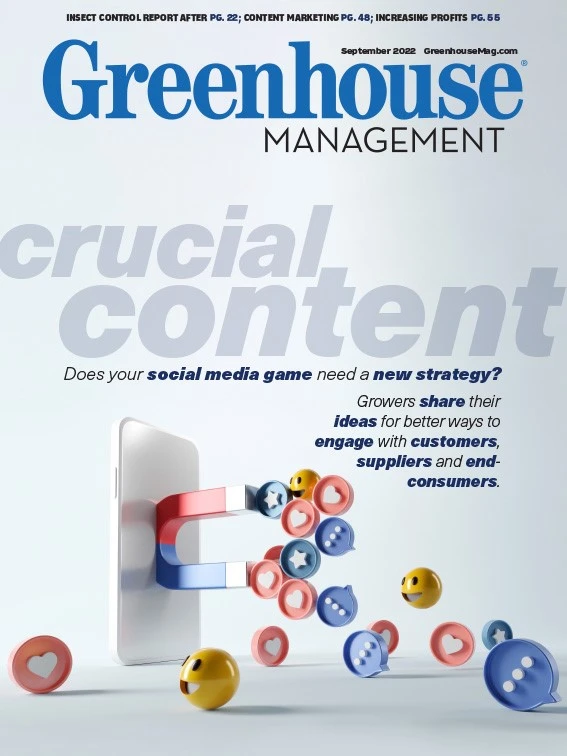
Mike Pazienza, the second-generation owner of the Bloomin Haus Nursery in Long Island, New York, is a grower-retailer serving the surrounding community. According to Pazienza, they grow roughly 95% of their own product (annuals and perennials, among other offerings) in over 100 greenhouses. Additionally, they sell standard garden center goods — hard goods, pots and garden decor.
“We sell to homeowners, to the public,” Pazienza says. “On one side of the street, we have our annuals, our gift shop, our hard goods. On the other side [of the street], we have an area just for tropicals and behind that is our tree and shrub area.” They also have an on-site petting zoo for children in need of entertainment tagging along with their plant-purchasing parents.
One of the business’ biggest challenges is efficient planting. In the past, they had a transplanter that broke down. In lieu of replacing it, they decided to plant by hand.
That, Pazienza says, resulted in them being backed up and Haus’ team being stretched in too many directions at once during the busy parts of the year.

“We were backed up a couple of weeks,” he says.
Enter TTA and their PackPlanter S. Pazienza says TTA came highly recommended to him from other growers on Long Island. He purchased his PackPlanter this spring. He had researched machines but says the PackPlanter S was the clear best option for him and his business.
“She was steady,” he says. “She handled different trays from different vendors. TTA came and spent a few days here helping me learning how to use it and you pick it up really quick.”
The biggest change in production Pazienza has seen so far is speed. Work that previously would have taken a week now only takes a few days at most. Time spent moving trays around the greenhouse for planting has been significantly reduced. The PackPlanter is also set to the exact size tray Bloomin Haus Nursery uses, so it operates exactly as expected.
“It’s smooth,” says Pazienza. “It’s a benefit. Having this machine is so much less of a stress on you if a worker doesn’t show up, if an unexpected problem pops up, if a trailer comes in and you have to spend the day unloading the trailer. It takes a lot of pressure off of the business and the people working, knowing that the machine is here to get the work done quickly and precisely. You can get a lot of other work done instead of spending six or seven days planting.”

Explore the September 2022 Issue
Check out more from this issue and find your next story to read.
Latest from Greenhouse Management
- Anthura acquires Bromelia assets from Corn. Bak in Netherlands
- Top 10 stories for National Poinsettia Day
- Langendoen Mechanical hosts open house to showcase new greenhouse build
- Conor Foy joins EHR's national sales team
- Pantone announces its 2026 Color of the Year
- Syngenta granted federal registration for Trefinti nematicide/fungicide in ornamental market
- A legacy of influence
- HILA 2025 video highlights: John Gaydos of Proven Winners





